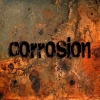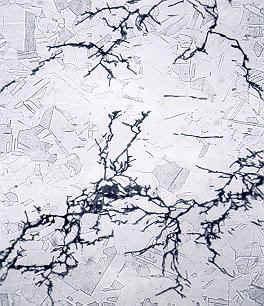RL Blogs

By Steve Pagani
Apr 04, 2016A summary discussion of corrosion mechanisms and information for the new oil refiner. |
||
| Corrosion is a big foe that refineries face day-in and day-out. There are many different types of corrosion and it’s important to know when to expect corrosion and how to protect against it.
The oil refining industry has entered a new PSM-amped world that we will no longer turn back from. Corrosion fluency will help us all.
This article aims to be an introductory collection of industry thoughts on refinery corrosion mechanisms and mitigation. We’re not here to fret the details - that is better left for the metal-heads out there. We would like to just create general awareness for the average refiner out there.
High Temperature Sulfidation
Sulfidation corrosion typically is of concern in sour oil services starting at temperatures in the 500F (260C) range. Up to that point, carbon steels are often acceptable, except in the most highly sour environments. Corrosion rates for sulfidation are typically pretty uniform and predictable but can be more localized in hydroprocessing units.
Alloying with chromium enhances resistance to sulfidation, almost in direct proportion to the chromium content when hydrogen is not present. With hydrogen present, the lower chromium alloys are of less use in resisting sulfidation.
The 300 series austenitic stainless steels (containing 18%+ chromium) have substantial resistance to sulfidation and are often the material of choice under the more severe sulfidation conditions.
High Temperature Hydrogen Attack
High temperature hydrogen attack (HTHA) is a condition that can occur in process equipment that is exposed to hydrogen at elevated temperatures (at least 400F or 204C).
Under these conditions hydrogen can disassociate into its atomic form and be driven into the steel by the temperature and pressure of the environment. That atomic hydrogen then reacts with unstable carbides in steel to form methane gas, which then causes gas pockets to form and leads to material degradation.
HTHA is a time-temperature-pressure function. As a piece of equipment is exposed to temperatures above its resistance limit, the damage to the steel will accumulate. The higher the temperature rises above the limit of the steel, the more rapidly the damage will occur. HTHA affects carbon and low alloy steels, but is most commonly found in carbon steel and carbon-1/2 Mo steel. Areas that are hotter, often near the outlet nozzle of catalytic equipment or the inlet nozzle of an exchanger that is cooling the process, are areas of concern for HTHA. Welds often suffer from HTHA degradation as well.
Another challenge with HTHA is that it is hard to catch with inspection. Typical inspection methods will not detect corrosion rates similar to sulfidation corrosion. The best way to mitigate HTHA risks is to ensure operation within limits of carbon steel or to upgrade to better metallurgy.
Stress Corrosion Cracking
isn’t a uniform corrosion rate to track. Stress corrosion can result in cracks (sometimes microscopic) which makes it hard to detect prior to failure.
Cracking will tend to appear at weld locations first. The dye penetrant method can be utilized to look for surface cracking if suspected, but it can only be performed on cold surfaces.
Again, the best defense against stress corrosion cracking is to avoid susceptible metallurgy when the potential for chlorides exists. 304L and 316L which have nickel content ranging from 8-10% are very vulnerable to this type of degredation. Stainless steels that are free of nickel and high nickel alloys are not subject to stress corrosion cracking.
Now that we’ve exhausted our interest in corrosion for the day, we would like to ask the oil refining community to pitch-in with your input on corrosion. Put in your comments below, and we will incorporate your feedback into our blog.
Remember, this is meant to be a 101-tutorial so keep your input simple. Some general pointers for your discussion to include:
We appreciate your contribution! | ||
|










